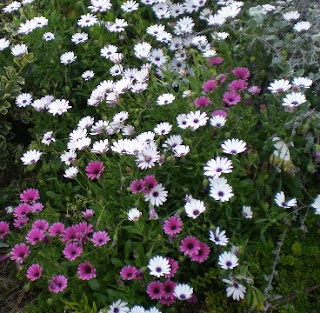 During World War II, hundreds of air raid sirens were installed throughout Los Angeles County as part of a civil defense system. The idea was to warn citizens and mobilize local defense plans in case of an enemy attack. The sirens were used in 1942 in the so-called "Battle of Los Angeles", an apparent false alarm that caused panic and injury, resulting in the deaths of five people. The sirens were also set off as part of the celebration on August 14, 1945, the day that Japan surrendered, ending the war.
During World War II, hundreds of air raid sirens were installed throughout Los Angeles County as part of a civil defense system. The idea was to warn citizens and mobilize local defense plans in case of an enemy attack. The sirens were used in 1942 in the so-called "Battle of Los Angeles", an apparent false alarm that caused panic and injury, resulting in the deaths of five people. The sirens were also set off as part of the celebration on August 14, 1945, the day that Japan surrendered, ending the war.After the war, the sirens were switched off, but during the Cold War of the 1950's they were reconditioned and reactivated, and some new sirens were added. They were tested on the last Friday of each month, which probably would have been a good time to attack the city, if one were so inclined. They also occasionally frightened citizens by short-circuiting at odd hours. Over time, the sirens deteriorated, replacement parts could not be found, and the system came to be seen as useless. They were officially silenced in 1985.
Because of the potential expense, there has been no project to take down the old sirens. From time to time, they are removed as safety hazards, or to make way for new projects. Most people don't notice them, just a few more poles in a city full of light posts, electrical wiring, telephone poles, satellite dishes and cell towers. Dennis Hanley, whose website documents the location of these relics, reports that as recently as April 2007, more than 85% of the sirens in the Valley were still standing, compared to nearly 77% city-wide. You can see Dennis's Air Raid Siren Page for a detailed list of locations.

 18th and 19th centuries. There are paved paths, water features and a tea house. Many water birds, especially egrets and ducks, can be seen enjoying the area. The garden shares its address on Woodley Avenue with a wastewater treatment plant which supplies the water for the garden's lake. Although visually appealing, the experience is affected by a distinctive odor whose pungency varies depending on the weather and the direction of the wind. The treatment plant can be viewed from an elevated walkway at one end of the garden.
18th and 19th centuries. There are paved paths, water features and a tea house. Many water birds, especially egrets and ducks, can be seen enjoying the area. The garden shares its address on Woodley Avenue with a wastewater treatment plant which supplies the water for the garden's lake. Although visually appealing, the experience is affected by a distinctive odor whose pungency varies depending on the weather and the direction of the wind. The treatment plant can be viewed from an elevated walkway at one end of the garden.
 Winter in South California is a lot like spring in other parts of the country, so flowers have been blooming for months. Now that spring is really here, there is even more garden action. These photos were taken in my back yard.
Winter in South California is a lot like spring in other parts of the country, so flowers have been blooming for months. Now that spring is really here, there is even more garden action. These photos were taken in my back yard.
 This huge mural project, depicting various aspects of California history from prehistoric times to the 1950's, was created in five stages between 1978 and 1983, with the participation of over 400 young people. It decorates a half-mile section of flood control channel along Coldwater Canyon Blvd. between Oxnard St. and Burbank Blvd. The mural can be viewed from a path through a grassy mini-park that follows the channel on its east side.
This huge mural project, depicting various aspects of California history from prehistoric times to the 1950's, was created in five stages between 1978 and 1983, with the participation of over 400 young people. It decorates a half-mile section of flood control channel along Coldwater Canyon Blvd. between Oxnard St. and Burbank Blvd. The mural can be viewed from a path through a grassy mini-park that follows the channel on its east side.
 I just got a copy of
I just got a copy of  Red-tailed hawks are found in the valley year-round. They are often seen soaring above open fields or brushy areas. They hunt small mammals, birds and reptiles. This one was perched in a favorite spot, a pine tree that overlooks my back yard.
Red-tailed hawks are found in the valley year-round. They are often seen soaring above open fields or brushy areas. They hunt small mammals, birds and reptiles. This one was perched in a favorite spot, a pine tree that overlooks my back yard.
 This is California Registered Historical Landmark No. 939. These folk art sculptures were created by John Ehn, who was born in 1897, over a 30-year period that ended with his death in 1981. The oversized figures and humorous tombstones were intended to create a vision of the mythological Old West.
This is California Registered Historical Landmark No. 939. These folk art sculptures were created by John Ehn, who was born in 1897, over a 30-year period that ended with his death in 1981. The oversized figures and humorous tombstones were intended to create a vision of the mythological Old West. 
